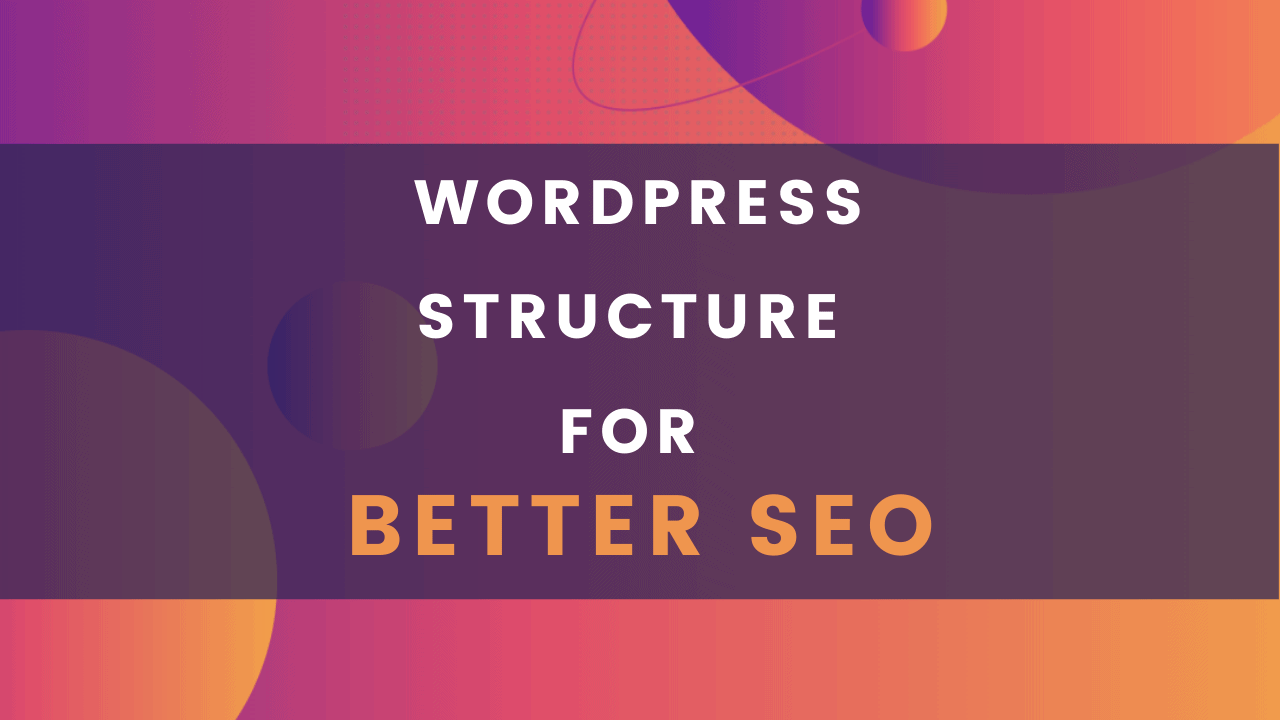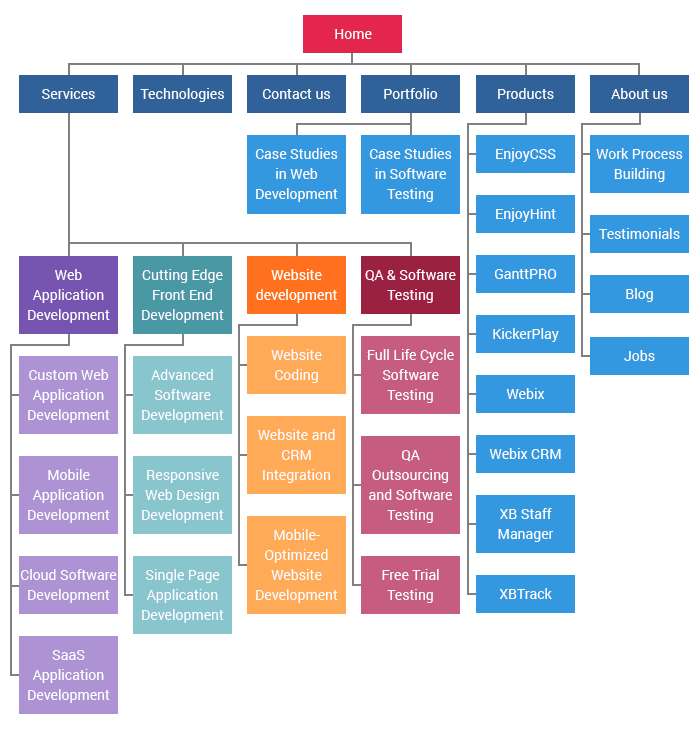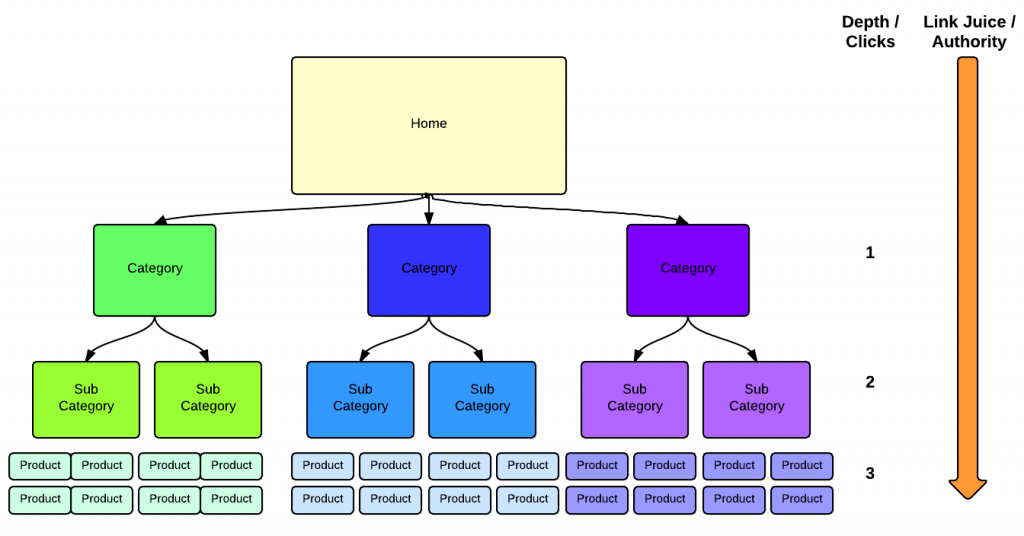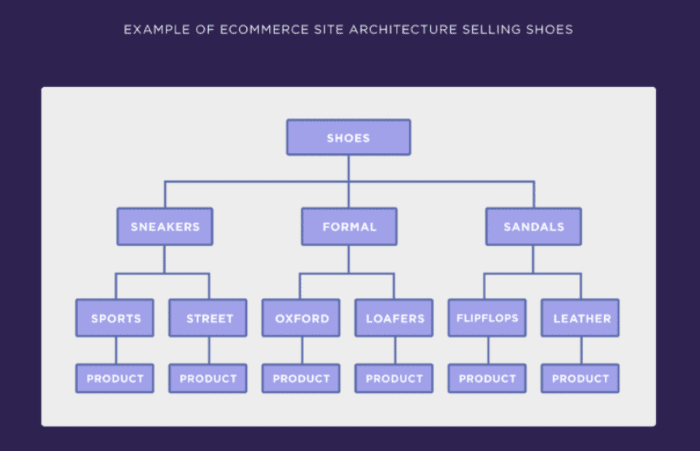
Website structure refers to the way that a website is organized and arranged. It includes the layout and organization of the website’s pages and content, as well as the way that the website is navigated by users. A well-structured website is easy to navigate and provides a positive user experience, which can help to improve its search engine rankings and increase traffic.
Learn to create a WordPress structure for better SEO →
SEO optimized website structure
An SEO optimized website structure is one that is designed to help search engines understand and index the content of a website, which can help to improve its search engine rankings. There are several factors that contribute to an SEO optimized website structure, including:
- Navigation: A website’s navigation refers to the way that users can move between different pages on the site. A clear and intuitive navigation system makes it easy for users to find the information they need and can improve the overall user experience.
- Hierarchy: The hierarchy of a website refers to the way that pages and content are organized and arranged. A well-organized hierarchy helps users to understand the relationship between different pages and content, and makes it easier to find what they are looking for.
- URLs: The URL (Uniform Resource Locator) is the web address of a page on a website. Well-structured URLs can help users and search engines to understand the content of a page and its place within the overall website structure.
- Internal linking: Internal linking refers to the way that pages on a website are linked to one another. Proper internal linking can help users to navigate the site and can also help search engines to understand the relationship between different pages on the site.
Structure for services website
The typical website structure for a services website will depend on the specific nature of the services being offered. However, there are a few common elements that are often found in the structure of a services website:
- Homepage: The homepage is usually the first page that users will see when they visit a website. It should provide an overview of the services being offered and should make it easy for users to navigate to other pages on the site.
- Services page: A services page is a dedicated page that provides more detailed information about the specific services that the website offers. This page should include a list of the services being offered, as well as descriptions of each service and any relevant pricing information.
- About us page: An about us page provides information about the company or organization offering the services. This page should include a brief history of the company, as well as information about the team, mission, and values.
- Contact page: A contact page provides users with a way to get in touch with the company or organization. This page should include contact information such as a phone number, email address, and physical address.
- Blog or resources page: Many services websites will also include a blog or resources page that provides users with additional information and resources related to the services being offered. This can help to establish the company or organization as an authority in its field and can also help to improve search engine rankings.
This is just one example of a typical website structure for a services website. Depending on the specific needs of the business, other pages and elements may be included as well.

Structure for Ecommerce website
The typical website structure for an ecommerce website will vary depending on the specific products and services being offered, as well as the size and complexity of the website. However, there are a few common elements that are often found in the structure of an ecommerce website:
- Homepage: The homepage is usually the first page that users will see when they visit an ecommerce website. It should provide an overview of the products and services being offered and should make it easy for users to navigate to other pages on the site.
- Product categories: Ecommerce websites often organize their products into categories, such as clothing, electronics, home and garden, etc. Users can typically access these categories through the main navigation menu or by using a search function.
- Product pages: Product pages provide detailed information about individual products, including images, descriptions, pricing, and options such as size, color, and quantity.
- Shopping cart: An ecommerce website typically includes a shopping cart feature that allows users to add products to their cart and track their purchases as they shop.
- Checkout: The checkout process allows users to complete their purchase by entering their payment and shipping information.
- Customer account: Many ecommerce websites also include a customer account feature that allows users to create a personal account, track their orders, and save payment and shipping information for future purchases.
This is just one example of a typical website structure for an ecommerce website. Depending on the specific needs of the business, other pages and elements may be included as well.

Category structure for ecommerce website
Here is an example of how SEO optimized category structure should look like. Pay attention that any product listed in any category should have only one unique URL.

Signs of not optimized structure
Look for this kind of signs to identify poorly optimized structure. Here is an example of a website structure that is not optimized for search engines:
- Hierarchy: The website has a cluttered hierarchy, with a large number of headings and subheadings that do not accurately reflect the content of the page. This can make it difficult for search engines to understand the content and the relationship between different pages on the site.
- URLs: The website’s URLs are long and confusing, and do not include relevant keywords. This can make it difficult for search engines to understand the content of the page and can also make it less likely that users will click on the links.
- Internal linking: The website has few internal links, and the links that do exist are not placed in a logical or intuitive way. This can make it difficult for users and search engines to navigate the site.
- Meta tags: The website has duplicate or poorly written meta tags, which do not accurately reflect the content of the pages. This can negatively impact the website’s search engine rankings.
- Alt text: Many of the images on the website do not have alt text, or the alt text that is present is not descriptive. This can make it more difficult for search engines to understand the content of the site and can also negatively impact the website’s accessibility.
By paying attention to these and other factors, you can create an SEO-optimized website structure that helps search engines to understand and index your content, which can lead to higher search engine rankings and more traffic for your website.

